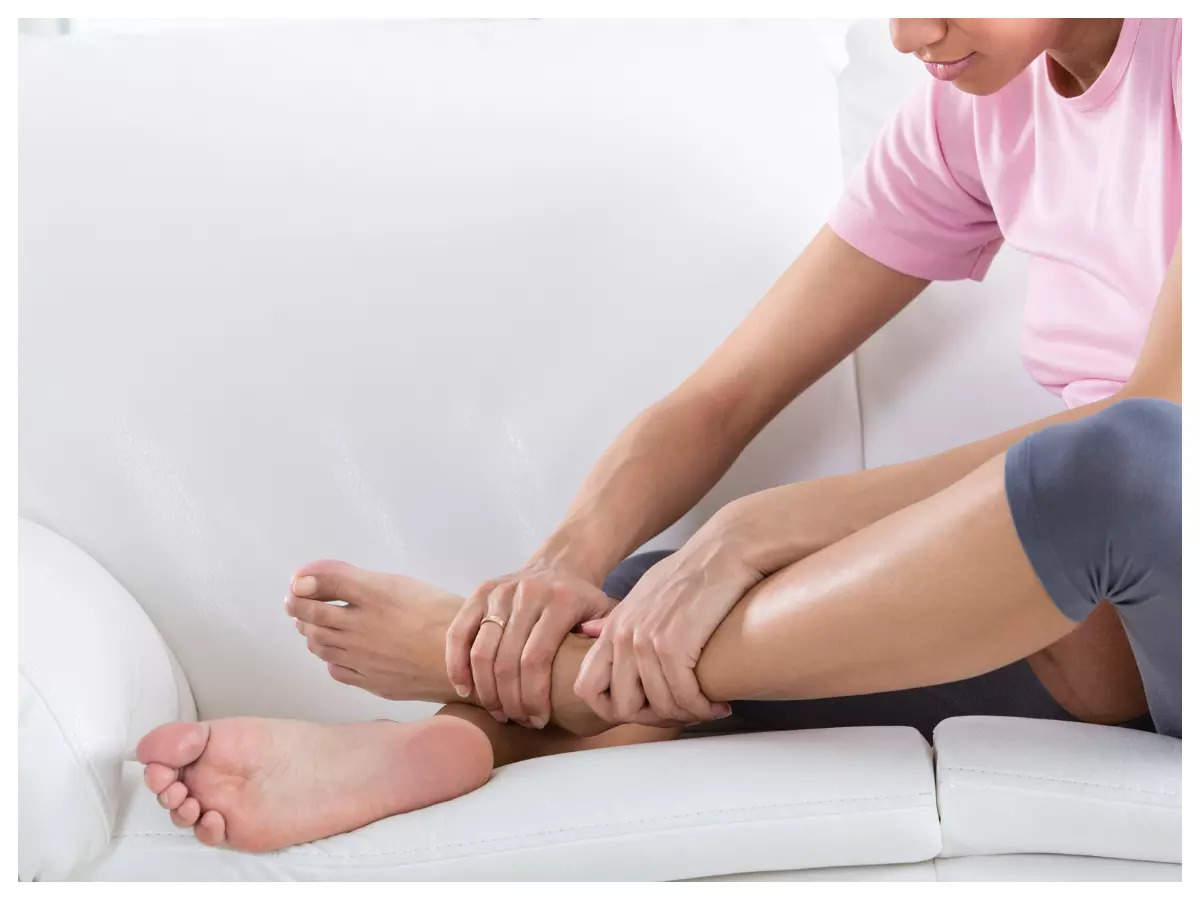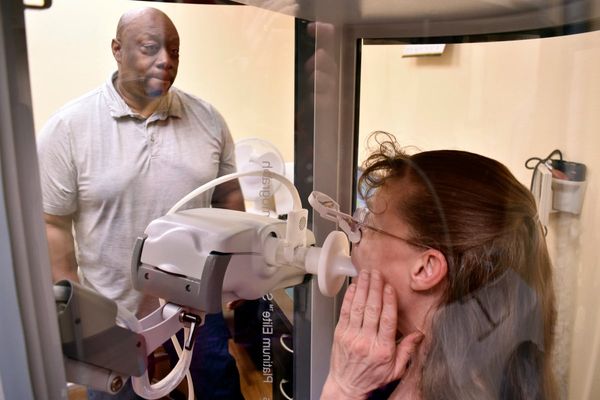
36-year-old Prisha Singh noticed a strange swelling in her legs and ankle when she couldn’t fit into her sneakers. She dismissed it believing it was water retention or tiredness but when the swelling didn’t subside even after many days, she booked a doctor’s appointment. Turned out her kidneys needed attention.
Swelling of the feet otherwise known in medical terminology as edema is a common problem encountered by people. Many of us would have experienced some swelling of the feet usually after a period of long exertion or after a strenuous journey. “As most of us are aware, edema of the feet may be a simple benign thing or a harbinger of serious organ dysfunction which warrants medical attention,” explains Dr. Subhash Chandra, Assistant Professor, Internal Medicine, Amrita Hospital, Kochi.
Dr. Allwin James D , MD.,( Gen.Med) DM.,(GE)– Consultant, Meenakshi Mission Hospital & Research Centre adds, “Mild edema normally clears up on its own, especially if you speed things up by elevating the affected limb above your heart. Drugs that help your body eliminate excess fluid in the form of urine may be used to treat more severe edema (diuretics). Furosemide is one of the most commonly prescribed diuretics. However, based on your unique medical history, your doctor will assess whether these sorts of medications are an appropriate fit for you.”
But sometimes this swelling is not benign and may be an indicator of a bigger underlying health issue. Dr. Varun Verma, Associate Director – Nephrology, Max Hospital, Patparganj shares, “Ankle swelling can be a marker of kidney disease. It usually denotes protein leakage in urine. It is possibly the first sign of renal disease.” However, patients with heart failure, CLD or hypothyroid state can also have such swelling, but history and labs can differentiate between these conditions. “I would recommend a visit to your doctor and appropriate evaluation if you have this symptom. If you have any such findings, kindly get your urine evaluated. I would recommend a urinalysis along with urine spot protein creatinine ratio. I would also recommend a detailed kidney function test and ultrasound of the abdomen. I would also suggest thyroid profile, HBA1C, liver function tests as well as 2 D echo.”
Harmless swelling of the feet may also be due to certain medications, especially drugs used for the treatment of hypertension like calcium channel blockers Amlodipine, cilnidipine and vasodilators like prasozin and hydralazine. Mild lymphatic dysfunction due to congenital causes can also produce a mild edema of the feet.
Warning signs that the swelling of the feet is ominous include feeling of breathlessness associated with the edema, reduction in the amount of urine you are producing, distension of the abdomen which occurs along with the edema and that associated with yellowing of the eyes and urine. Some other signs that the edema is dangerous include edema in one limb occurring after a surgery or a prolonged travel. Edema accompanied by pain and redness of the leg which is painful to touch could indicate an infection in the legs called cellulitis, adds Dr Chandra.
Is your swelling linked to water retention?
Retention of water is usually a result of water intake in excess of our urine output. This may be the scenario in patients with chronic renal impairment who have decreased urine output but mistakenly consume large quantities of water in the belief that they are helping their kidneys. Reductions in urine output can also be due to non compliance with medications designed to increase urine output like diuretics which may have been prescribed by your doctor. Highly reduced salt intake in diet can also lead to water retention as kidneys require a minimal amount of salt for the excretion of water in urine.
The link between swelling and cardiac, renal or liver dysfunction
Swelling of both legs may indicate serious cardiac, renal or liver dysfunction. People who have a history of having chest pain or having suffered from heart attacks may develop edema at a later time due to cardiac failure. Such edema is accompanied by significant fatigue, breathlessness on exertion and swelling of the abdomen. This edema occurs due to the failure in the pumping mechanisms of the heart leading to significant back pressure and overloading in the venous circulation which in turn produces edema. Also this edema occurs after a period of exertion and can be seen mainly towards the evenings, adds Dr Chandra.
Another mechanism of edema is an under-filling of the arterial circulation due to cardiac pump failure which activates certain hormones in the kidney called the renin angiotensin system. The activation of this system leads to sodium and water retention by the kidneys and ultimately edema.
Edema can also occur due to renal failure. This edema is usually accompanied by facial swelling more towards the morning. The signs that edema is renal related include a reduced urine output, very high blood pressures and significantly frothy urine especially in the mornings. Sometimes blood in urine may also be indicative of renal causes of edema. Edema may be seen in patients with chronic renal failure where the basic excretory function of the kidney is severely reduced so that it cannot eliminate urea and other toxic metabolites as well as get rid of excess water. Renal edema also occurs in a condition called nephrotic syndrome where large amounts of protein are lost in the urine especially albumin. This protein is what maintains oncotic pressure in the blood vessels which keeps fluid within the blood vessels. With the loss of the oncotic pressure the fluid seeps outside the blood vessels causing edema. A similar mechanism occurs in cirrhosis and liver failure where the protein is not produced in sufficient quantities by a failing liver. Edema due to liver dysfunction may be accompanied by jaundice where there is yellow discoloration of eyes and of urine. Patients with history of heavy alcohol usage, obese individuals and people with hepatitis B and C infections are people most likely to develop liver damage related edema.
Tests to rule out health concerns
Patients with edema with the above mentioned symptoms need to undergo testing to ascertain whether they suffer from organ dysfunction or other problems. Routine blood investigations would include a complete blood count to assess if the patient has significant anemia as very low haemoglobin can itself cause cardiac failure. Other investigations include renal function testing which include blood urea and serum creatinine. Urine routine can show presence of blood or protein in the urine as well as a 24 hour urine protein or a urine protein creatinine ratio can tell us about heavy proteinurea as the potential cause.
Liver function testing is done to check for albumin and globulin levels as well as liver enzymes like SGOT, SGPT and Alkaline phosphatase which may throw light on ongoing liver injury. ECG and 2D ECHO are also done to assess for the pumping capacity of the heart, Ejection fraction, structural abnormalities, regional wall motion abnormalities contributing to cardiac edema. Blood tests for cardiac failure including BNP or brain natriuretic peptide are also done where high levels indicate cardiac dysfunction. Other tests include a thyroid function test as hypothyroidism is another common cause of edema of both legs.
A unilateral swelling of one leg requires investigations like an Ultrasound venous Doppler to look for thrombosis within the deep veins of the leg, a dangerous condition called DVT or deep vein thrombosis. Other tests done in unilateral swelling would include a blood count to rule out infection especially if there is pain and redness over the swollen foot. In Kerala, unilateral swelling of the feet may also be due to filarial infection which leads to a lymph vessel dysfunction which helps in carrying fluid back to the chest. This warrants investigations like lymphoscintigraphy which tell us about any lymphatic dysfunction in the limbs, elaborates Dr Chandra.







